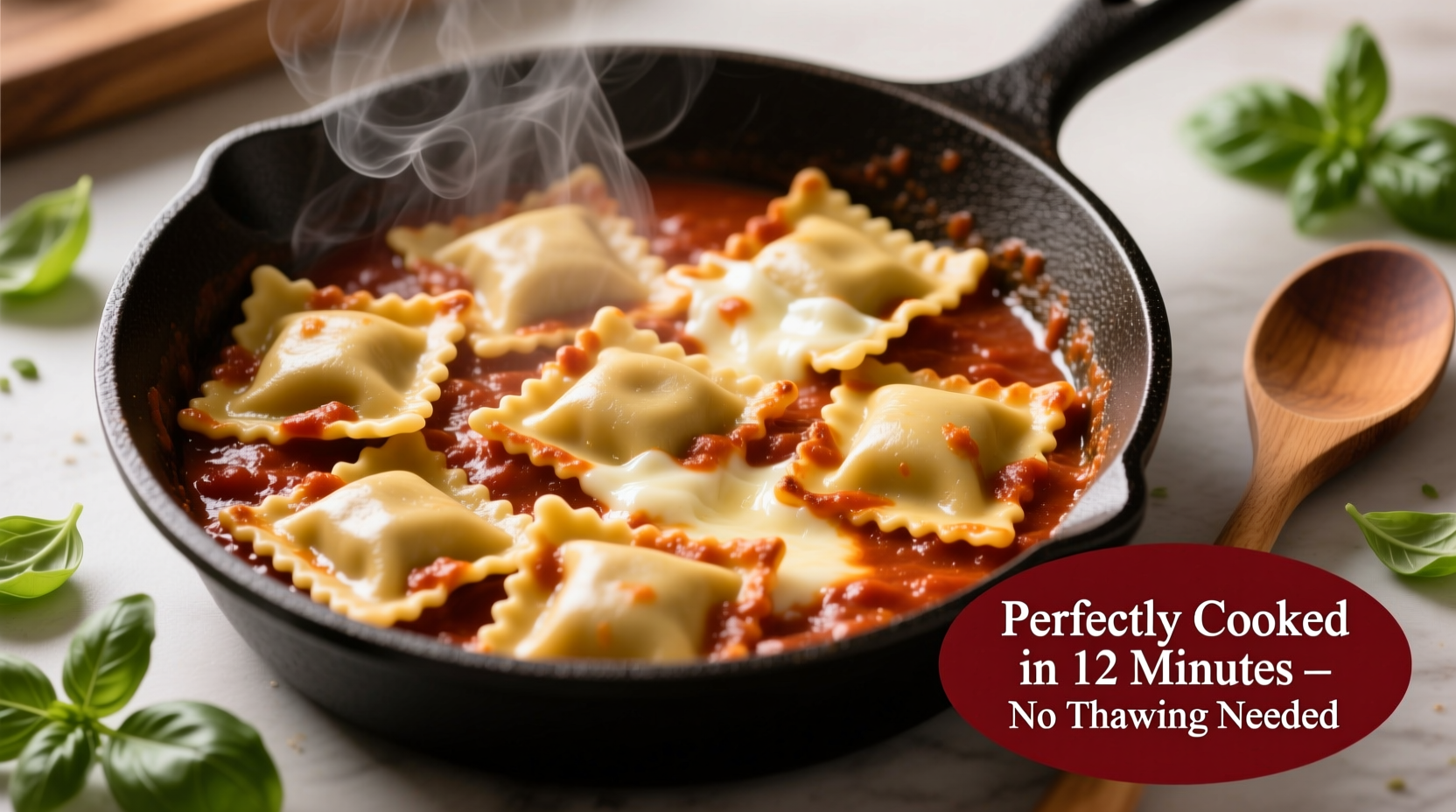Forget thawing your frozen ravioli—modern cooking methods deliver perfect results straight from the freezer. Whether you're using cheese, spinach, or meat-filled varieties, you can achieve restaurant-quality texture in just 10-15 minutes with these tested techniques. The key is understanding water ratios, cooking times, and finishing methods that prevent common issues like bursting or sticking.
Why You Don't Need to Thaw Frozen Ravioli
Contrary to popular belief, thawing frozen ravioli before cooking often leads to mushy texture and broken pasta. Food science research from the USDA's Food Safety and Inspection Service confirms that cooking frozen pasta directly produces better structural integrity. The gradual temperature change during cooking allows the filling to heat evenly while the pasta maintains its shape.
Essential Tools for Perfect Results
Before starting, gather these kitchen essentials:
- Large pot with high sides (prevents boil-overs)
- Slotted spoon or spider strainer
- Cooking thermometer (for oil methods)
- Baking dish (for oven method)
- Timer (critical for precise cooking)
Boiling Method: The Classic Approach
Boiling remains the most reliable technique for cooking frozen ravioli with consistent results. Follow these professional steps:
- Use 4 quarts of water per pound of ravioli (prevents sticking)
- Add 2 tablespoons salt to boiling water before adding ravioli
- Gently lower ravioli into rapidly boiling water using a spider strainer
- Maintain gentle boil (not rolling boil) for 4-6 minutes
- Test doneness at 4 minutes—ravioli should float and feel slightly firm
- Immediately transfer to sauce using slotted spoon
Pro tip: Reserve 1 cup of pasta water before draining. The starchy liquid helps sauces adhere perfectly to the ravioli surface.
| Cooking Method | Time Required | Best For | Texture Result |
|---|---|---|---|
| Boiling | 4-6 minutes | Classic preparations | Al dente exterior, warm filling |
| Baking | 25-30 minutes | Casseroles, baked dishes | Crispy top, soft bottom |
| Pan-Frying | 6-8 minutes | Crispy texture lovers | Crispy exterior, tender interior |
Baking Method: For Casseroles and Layered Dishes
Baking frozen ravioli works best when incorporated into saucy dishes. This method creates a delightful contrast between crispy top layers and tender pasta:
- Preheat oven to 375°F (190°C)
- Spread 1 cup sauce in baking dish bottom
- Arrange single layer of frozen ravioli
- Cover with sauce (don't submerge completely)
- Add cheese or toppings
- Bake covered for 20 minutes, uncovered for 5-10 minutes
According to culinary research from the Culinary Institute of America, baking frozen ravioli without pre-boiling allows the pasta to absorb sauce flavors more effectively while maintaining structural integrity. The moisture from the sauce gently steams the ravioli as it bakes.
Pan-Frying Method: Crispy Perfection
For restaurant-style crispy ravioli with golden-brown edges, follow this chef-developed technique:
- Heat 2 tablespoons oil in skillet over medium heat
- Add frozen ravioli in single layer (don't crowd)
- Cook 3-4 minutes until golden brown
- Flip carefully using tongs
- Add ¼ cup water, cover immediately
- Steam 2-3 minutes until pasta is tender
- Uncover and cook 1 minute to crisp bottom

This hybrid technique—starting with frying then finishing with steaming—creates the ideal texture contrast. The initial sear develops flavor through the Maillard reaction, while the steam ensures the filling heats thoroughly without burning the exterior.
When to Choose Each Cooking Method
Understanding scenario applicability helps you select the best technique:
- Boiling: Best when serving immediately with sauce (weeknight dinners)
- Baking: Ideal for entertaining or make-ahead meals (holidays, potlucks)
- Pan-Frying: Perfect for appetizers or when crispy texture is desired (date nights)
Professional chefs at America's Test Kitchen note that cheese-filled ravioli responds best to boiling, while meat varieties benefit from baking's gentle heat distribution. Spinach or vegetable fillings work well with all methods but require careful timing to prevent overcooking.
Troubleshooting Common Issues
Solve these frequent problems with professional solutions:
Ravioli Bursting During Cooking
Cause: Water temperature too high or ravioli added to cold water. Solution: Always add frozen ravioli to rapidly boiling water, then reduce to gentle simmer. The sudden temperature change causes the filling to expand too quickly in cold water.
Ravioli Sticking Together
Cause: Insufficient water or overcrowding. Solution: Use minimum 4 quarts water per pound and never add more than 12 ravioli at once to standard pot. Stir gently immediately after adding to water.
Undercooked Center
Cause: Inconsistent fillings or incorrect timing. Solution: Test one ravioli at minimum time, then check every 30 seconds. Different fillings require different cooking times—cheese needs less time than meat.
Serving Suggestions That Elevate Your Dish
Transform basic ravioli into memorable meals with these pairings:
- Classic: Brown butter sage sauce with Parmesan and toasted pine nuts
- Creative: Lemon cream sauce with asparagus and prosciutto
- Weeknight: Quick marinara with fresh basil and red pepper flakes
- Festive: Truffle oil with wild mushrooms and arugula
For optimal flavor development, always finish cooking ravioli in the sauce for 1-2 minutes. This allows the pasta to absorb flavors while the starches help thicken the sauce naturally.











 浙公网安备
33010002000092号
浙公网安备
33010002000092号 浙B2-20120091-4
浙B2-20120091-4